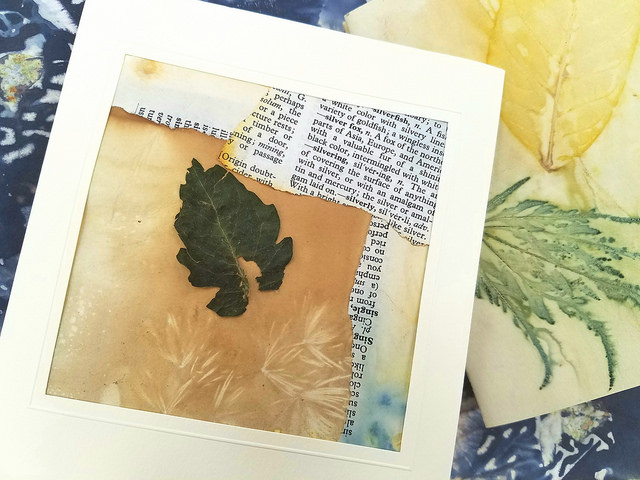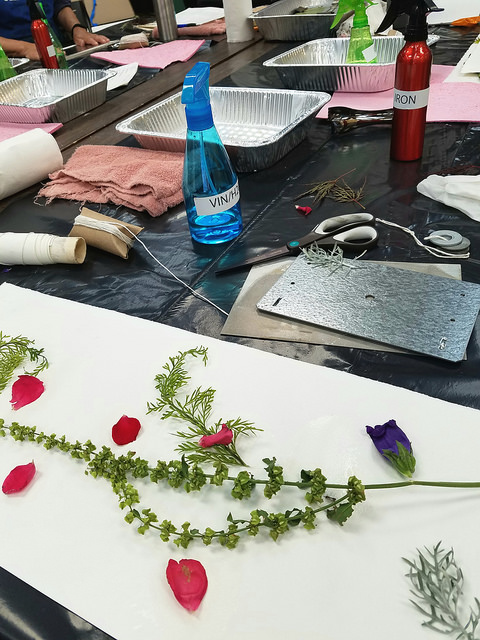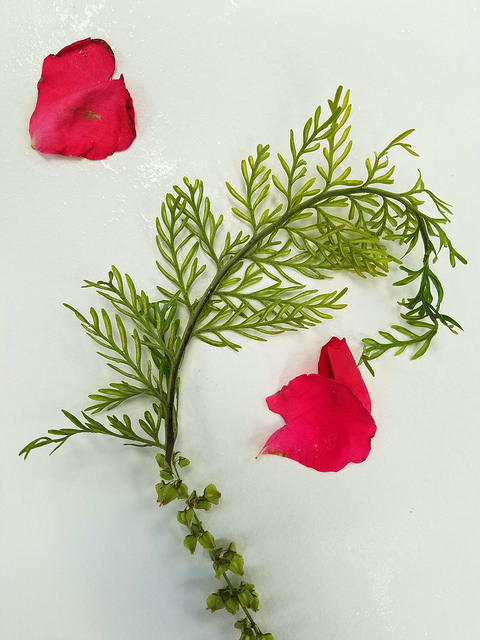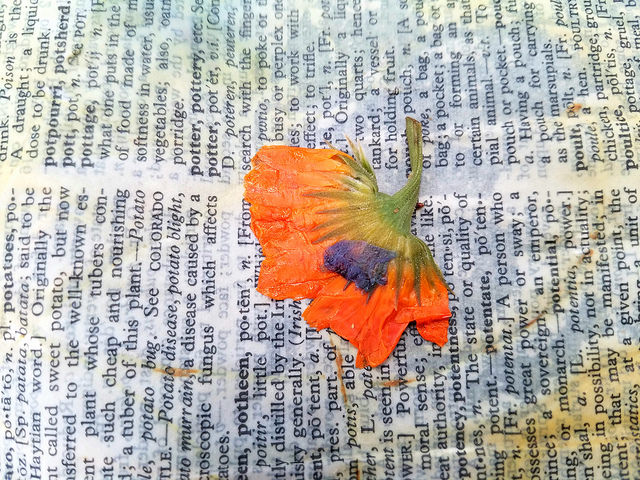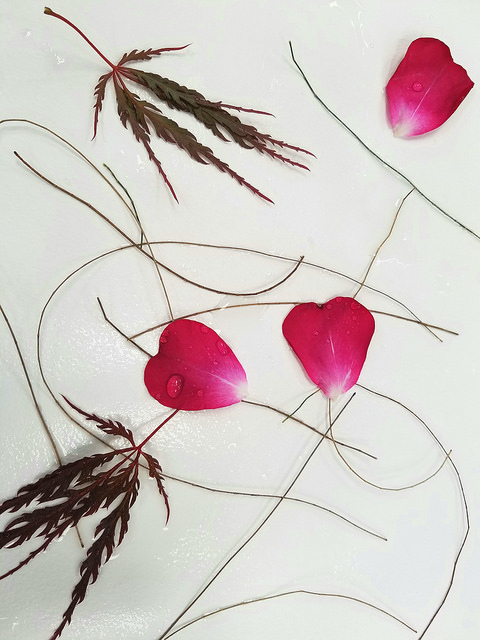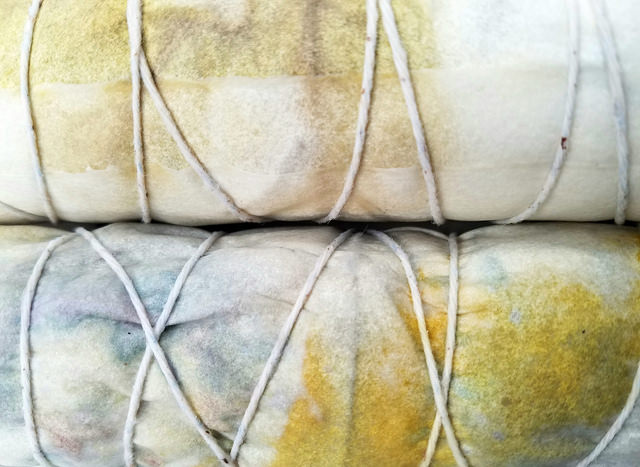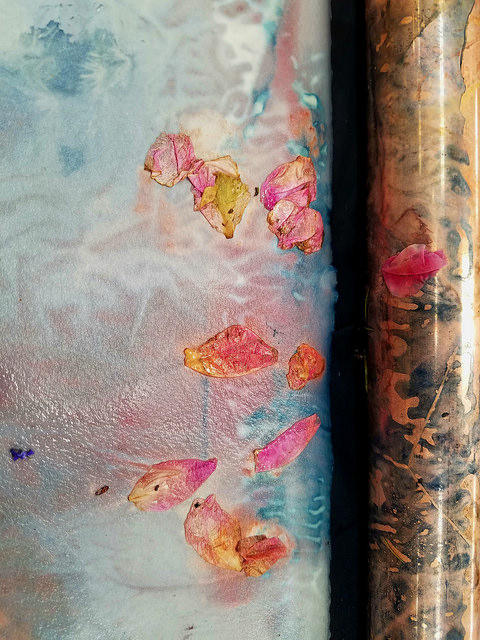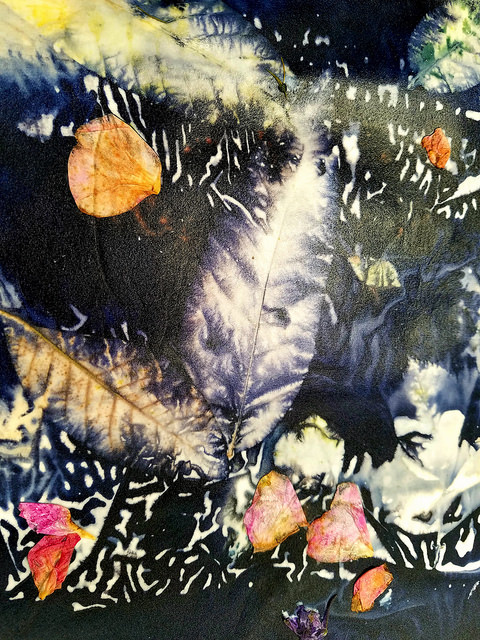Printing with Plants: Eco Printing Experiments
. Posted by Sherrie Thai by Shaireproductions.com .
At the core, leaves and flowers are organic pieces of art, filled with wonderful tannins, natural colors that can dye papers when coaxed with the right conditions. I took a 2-day course at the SF Center for the Book with Dorothy Yuki, exploring different techniques to expose the beauty of the plants on paper.
I learned that Eco-printing is all about experimentation. I happily discovered that I could produce simple concoctions without much use of chemicals, where I could then reproduce the process in my tiny home kitchen. Initially, you can dampen the paper with a Water-Vinegar solution and apply that same solution to your plants. Different plants have differing level of tannins; Roses give a nice splash of color, and a reddish Japanese Maple leaves transfer a remarkable green tone when placed in a bath solution. Ultimately, if you go simple with just a water/vinegar solution throughout the process, you can get a subtle watercolor effect, perfect for layering artwork–illustrations, calligraphy or photography.
There are tons of variables, like incorporating mordants, like alum or iron, to enhance the colors of the plants, but the main transfer mechanisms of plant to paper are physical contact and simmering the plants in a bath solution (like water/vinegar for a simple treatment, or using red onion for a deep orange hue). Here, the plants have been rolled into the paper along a cylinder and bound with a string. It then soaks up the water solution for about an hour, where all the magic happens.
Revealing the artwork from a copper pipe (with rose petals still attached)
When the artwork is finally unrolled, it’s like Christmas! The transfer result is widely variable, so it’s a treat to see what the end result is. In this indigo blue piece, a logwood rag (of beet red), was placed on top of the plants, rolled up, and simmered in an iron water solution. The prints were laid to dry for hours, then flattened with an iron, then is ready to be used and appreciated.
Part of creating art is about learning different techniques and experimenting. I’m super happy to have been able to take this course and work with the wonders of the garden; I hope to incorporate these with my illustrations more. Stay tuned!

